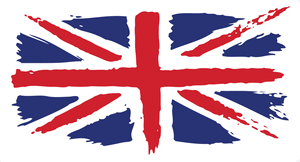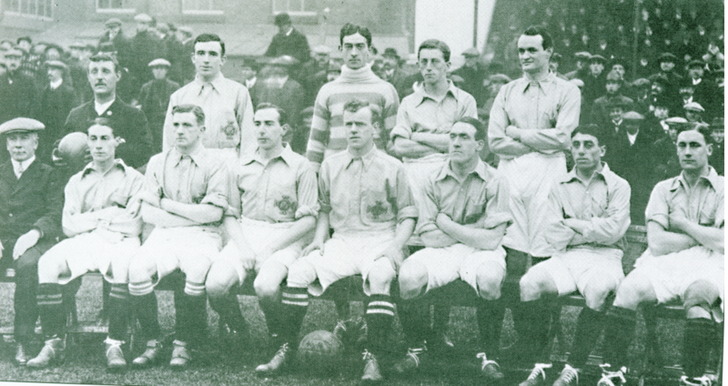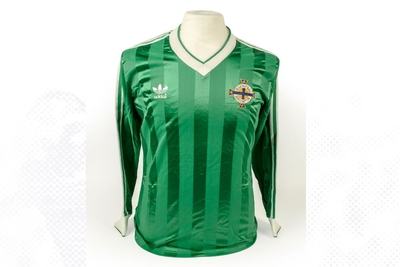 Every now and then, when England under-perform in their bid to qualify for an international tournament, for example, the English press will ask for a return of the British Home Championship.
Every now and then, when England under-perform in their bid to qualify for an international tournament, for example, the English press will ask for a return of the British Home Championship.
They’ll suggest that it can only do the home nations good to play competitive matches against each other on a regular basis.
But what exactly was the British Home Championship? When did it start? Why did it end? Who took part in it?
We can hopefully begin to answer all of those questions and more in this section of the website, as we explore the history of one of the first ever international tournaments in football.
History Of The Home Championship

The competition was best known as the British Home Championship, but it was sometimes called the Home International Championship, the Home Internationals or, more simply, the British Championship. It was first played in the 1883-1884 season and lasted for one-hundred years, but what possessed the powers that be to create the tournament in the first place?
As is the case with most conversations about the origins of football, part of the chat about the Home Championship must involve discussions about the rules of the game. By the 1880s football was a well-established sport throughout the entire United Kingdom and there were football associations in each of the home nations. Unsurprisingly, they all played by their own rules and matches were generally officiated under the rules of whichever nation was the home team.
England, Ireland, Scotland and Wales used to play regular friendlies against each other, pretty much on an annual basis. The adoption of the home team’s set of rules worked to an extent, but it wasn’t the ideal solution that all members of the United Kingdom wanted when it came to their football games.
Consequently representatives of the four associations met in Manchester in December of 1882 to outline some rules that would be adopted world wide.
This meeting led to the establishment of the International Football Association Board whose job it was to approve any changes to the rules of the game. Incidentally this organisation still exists today.
Formal rules being adopted by all of the home nations meant that more formal international matches could also be arranged much more easily.
Because of this it was decided at the same meeting that the friendlies that had previously been played on an ad hoc basis would be played more regularly and officially, with something at stake.
That saw the birth of the British Home Championship.
Tournament Format

The competition was held every season, beginning with the 1883-1884 campaign. When the games were played changed from year to year depending on the availability of each nation’s players. Oftentimes they were crammed in towards the end of a season and occasionally were played over a short period of time after the season itself had already been concluded.
The competition’s format was essentially what you would expect from an international tournament. Each team played the other once, meaning that they would have played three games each for a total of six games in the tournament. Theoretically teams would play one or two games at home and their remaining one away from home, with the idea being that home advantage would shift from year to year.
Unlike most modern competitions the points were slightly different back then. Instead of getting three points for a win, two were awarded. One was still given for a draw and the losing team in any match got no points. As is standard for such tournaments, the teams were formed into a league table at the conclusion of the competition and whoever was top was declared to be the winner. If more than one team had the same number of points then they shared that position in the table. This meant that if two teams finished in fist place at the end of the competition then they would share the Championship.
1956 was the only year when all four teams finished on equal points and the Championship was split four-ways. From the 1978-1979 Championships a decision was taken to split the positions in the table according to goal difference and, if that wasn’t enough, goals scored. When the competition ceased to be played England had finished as the overall winners with 54 Championships, 20 of which were shared. Scotland had 41, 17 of which were shared. Wales managed 12 victories, with five of them being shared and Ireland, who later became Northern Ireland, won 8, five of which were shared.
The most notable occurrence in the tournament’s history from Scotland’s point of view happened in 1967. That year’s Home Championship was the first since England had won the World Cup in 1966 and the English were clear favourites for the title. The competition came down to the final match between England and Scotland, which Scotland won 3-2. It led to the Scots amusingly referring to themselves as the ‘World Champions’, having beaten the World Cup winners.
Results
Here is how each team did during the history of the competition:
| Team | Total Wins | Wins Outright | Shared Wins |
|---|---|---|---|
| England | 54 | 34 | 20 |
| Scotland | 41 | 24 | 17 |
| Wales | 12 | 7 | 5 |
| Ireland | 8 | 3 | 5 |
Why Did The Home Championship End?
 The tournament’s end was coming from 1981. Northern Ireland’s ‘Troubles’ that year meant that the English, Scottish and Welsh squads were unwilling to travel to Belfast for games against the Northern Irish. It meant that, for the first time in the tournament’s history, it was abandoned and unfinished.
The tournament’s end was coming from 1981. Northern Ireland’s ‘Troubles’ that year meant that the English, Scottish and Welsh squads were unwilling to travel to Belfast for games against the Northern Irish. It meant that, for the first time in the tournament’s history, it was abandoned and unfinished.
Football’s troubles continued in the following years, as did social unrest off the pitch. That, combined with a falling attendance rate at the Home Championship games, was the death knell for the competition itself.
The final tournament was played in the 1983-1984 season. The English FA had confirmed before it began that they wouldn’t take part in another one and the Scottish FA followed suit. It ended, somewhat appropriately, with all four teams on the same number of points. That meant that it came down to goal difference and the trophy was won for the final time by Northern Ireland, who finished top by a single goal.
The Irish Football Association remain in possession of the trophy to this day.
